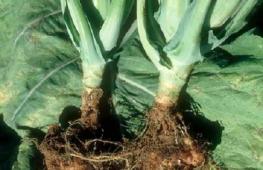Calcium ammonium nitrate. Ammonium nitrate: how to apply the fertilizer correctly Buy IAS at a wholesale price
- Highly effective granular nitrogen fertilizer for grains, fodder, oilseeds, fruits and vegetables, sugar beets
- Can be used on all types of soil and has a positive effect on their fertility
- Regulates the growth of vegetative mass, increases crop yields
- It is an alloy of ammonium nitrate and ground limestone, non-hygroscopic, non-caking and safe during storage
- It has good commercial properties for mixing fertilizers due to the high strength of granules and coarse grain composition
Nitrogen-limestone fertilizer (NH 4 NO 3 CaCO 3 MgCO 3) is a promising nitrogen fertilizer, physiologically neutral, which is a mixture (alloy) of ammonium nitrate and ground limestone or dolomite. Contains 27% nitrogen, 4% calcium and 2% magnesium. Depending on the composition, the fertilizer is called: lime-ammonium nitrate or ammonium nitrate with dolomite. The fertilizer is granular (granules 1-5 mm), suitable for mixing with phosphate and potassium fertilizers.
Compared to ammonium nitrate, it has better physical and chemical properties, is less hygroscopic, caking less, and can be stored in stacks.
Nitrogen-lime fertilizer can be used on all types of soils and for all agricultural crops as the main, sowing fertilizer and as a top dressing. The fertilizer contains calcium and magnesium carbonates. The application is especially effective on acidic and saline soils, soils of light granulometric composition, depleted in magnesium.
PHYSICAL AND CHEMICAL INDICATORS
TU 2189-064-05761643-2003Refers to flammable substances, explosion-proof.
They are produced in packaged form (bags, BIG-BAG) and without packaging (in bulk). Store in closed dry warehouses.
Transportation is permitted by all modes of transport, except air, in accordance with the rules for the carriage of goods in force for this type of transport.
The stabilized form of ammonium nitrate is of great importance from a safety point of view and significantly simplifies the purchase of this fertilizer.
Manufacturer: OJSC Novomoskovsk Joint Stock Company Azot, OJSC Nevinnomyssk Azot.
APPLICATION
The fertilizer creates optimal conditions for plant nutrition with nitrogen, and the content of calcium and magnesium carbonates makes calcium nitrate especially effective when used on acidic soils.
The main method of applying fertilizer is surface, with or without incorporation into the soil. For vegetable crops it is applied scattered or in a strip method, as well as when sowing/planting in small doses (7-15 kg N/ha) in rows or holes.
For spring grains, the main fertilizer with nitrogen is carried out shortly before sowing. Most nitrogen fertilizers are applied as top dressing. Recommended doses of fertilizing are 10-30 kg N/ha for the first feeding and 15-40 kg N/ha for the second. The timing of fertilizing is determined in strict accordance with the phases of plant development. The application dose for silage crops varies from 40 to 90 kg N/ha and depends on the application of organic fertilizers. To increase the protein content in sunflower, fertilize with 30 kg N/ha during the period of intensive growth.
According to the Stavropol Research Institute of Agriculture 2005-2007. the average increase in crop yield from the use of lime-ammonium nitrate is: for winter wheat on ordinary chernozem 3.4-7.1 c/ha, on chestnut soil - 4.0-6.1 c/ha; for spring barley - 2.5-3.7 c/ha and 6.2-7.3, respectively; for corn silage - 28-63 c/ha; for sunflower - 0.8-1.3 c/ha. Feeding the second winter wheat with lime-ammonium nitrate increased the content of raw gluten in the grain by 2.5% compared to ordinary nitrate. A higher quality of gluten was also noted than when applying other types of nitrogen fertilizers. The use of lime-ammonium nitrate for corn at an increased phosphorus background (P 60) increases the crop's responsiveness to applied fertilizers by more than 4 times.
More than 50 million hectares of soil in the Russian Federation have an excessively acidic environment; more than 48% of arable soils have insufficient calcium and magnesium content. Therefore, in the context of stopping the liming of acidic soils, it is relevant to produce a form of nitrogen fertilizer that, along with providing plants with nitrogen, does not acidify the environment in the soil and supplies the plants with calcium and magnesium. This form is lime ammonium nitrate.
Calcium ammonium nitrate(SIA) - an alloy of ammonium nitrate with dolomite (calcium and magnesium carbonate) is a nitrogen-magnesium-calcium fertilizer with a neutral reaction. The nitrogen content in it is 27%, carbonates -17%, in the ratio Ca: Mg = 1:1.
In terms of physical and chemical properties, IAS in accordance with TU 2181-019-00205311-2000 has the following indicators:
Nitrogen- the most important biological element, which is a component of all proteins and amino acids, nucleic acids, chlorophyll, alkaloids, many vitamins, hormones and other biologically active compounds. All enzymes that catalyze metabolic processes in plants are protein substances.
Magnesium- participates in the process of photosynthesis, being part of chlorophyll, and plays an important role in the activation of enzymes that carry out the supply and movement of phosphorus in plants. With a lack of magnesium, plant chlorosis is observed and growth stops.
Calcium - promotes the transport of carbohydrates in plants, improves the solubility of many compounds in the soil, and promotes the absorption of important nutrients by plants. Calcium and magnesium strengthen cell walls and their attachment to each other, promote the development of the root system, and are essential nutrients. An acute deficiency of this element is manifested in the formation of whitish leaves on the upper young parts of plants and loss of turgor in the upper leaves and stems. Even in potatoes that are resistant to excessive soil acidity, the upper leaves have difficulty opening, and the growing point of the stem dies.
On acidic soils in which nitrates accumulate, losses of applied nitrogen can reach 50-55%. Therefore, the optimal reaction of the environment in the soil and the content of nutrients is the main condition for good nitrogen nutrition of plants when applying nitrogen fertilizers.
Calcium ammonium nitrate is the only universal nitrogen fertilizer for all soils and plants. When applied systematically, it is superior in efficiency to other forms of nitrogen fertilizers on acidic soils. Thus, field experiments have shown that the systematic application of lime-ammonium nitrate on acidic soil is 3.3 times more effective than ordinary ammonium nitrate.
The optimal reaction of the environment (especially when cultivating malting barley) in the soil and the content of nutrients is the main condition for good and complete nutrition of plants when applying fertilizers.
Therefore, with the systematic use of conventional forms of nitrogen fertilizers, the plants’ need for magnesium increases even more, as a result of which IAS neutralized with dolomite should be used, which under these conditions is more effective than neutralized with limestone. The use of IAS in doses of 3-5 c/ha provides about 50% of the annual need of plants for magnesium.
IAS does not cake, does not burn, and even with strong detonation does not explode.
The above facts indicate that calcium ammonium nitrate is a highly effective, environmentally friendly fertilizer, which does not require complex and expensive technology for use in agriculture in the Russian Federation.
The effect of magnesium on the productivity of cereal crops:
On the left is the effectiveness of using calcium ammonium nitrate containing magnesium;
On the right is the use of ammonium nitrate on a background limed with lime flour.
Granulated lime-ammonium nitrate -
Fertilizer, which includes ammonium nitrate and synthetic calcium carbonate (synthetic chalk).
Calcium ammonium nitrate is characterized by increased granule strength, good friability, fluidity, stable granulometric composition, and does not cake during storage.
It is applied to most agricultural crops in all types of soil, is characterized by high nitrogen digestibility, and does not cause soil acidification.
A special feature is that, unlike “ammonium nitrate,” “calcium ammonium nitrate” is explosion-proof.
Supplied in bulk, packed in soft containers, in polypropylene bags with a polyethylene liner of 50 kg. or in five-layer paper laminated valve bags of 50 kg.
Calcium ammonium nitrate
|
The name of indicators |
Norm |
|
Total mass fraction of nitrate and ammonium nitrogen in terms of nitrogen,%, |
|
|
Mass fraction of calcium carbonate,%, not less |
|
|
Mass fraction of calcium nitrate,%, no more |
|
|
Mass fraction of water,%, no more |
|
|
Grading: mass fraction of granules ranging in size from 1 to 4 mm.,%, not less mass fraction of granules less than 1 mm in size.,%, no more mass fraction of granules larger than 6 mm,%, no more |
|
|
Static strength of granules, N/granules (kg/granules), not less |
|
|
Friability,%, not less |
Nitrogen is the most important biological element, being the main part of all proteins and amino acids, nucleic acids, alkaloids, chlorophyll, many vitamins, hormones and other biologically active compounds. All enzymes that catalyze the processes of metabolism of substances in plants are protein substances.
Magnesium - participates in the process of photosynthesis, being part of chlorophyll, and plays an important role in activating enzymes that carry out the supply and movement of phosphorus in plants. With a lack of magnesium, plant chlorosis occurs and growth stops.
Calcium - promotes the transport of carbohydrates in plants, improves the solubility of many compounds in the soil, and promotes the absorption of important nutrients by plants. Calcium and magnesium strengthen cell walls and their attachment to each other, promote the development of the root system, and are essential nutrients. An acute deficiency of this element is manifested in the formation of whitish leaves on the upper young parts of plants and loss of turgor in the upper leaves and stems. Even in potatoes that are resistant to excessive soil acidity, the upper leaves have difficulty opening, and the growing point of the stem dies.
On acidic soils in which nitrates accumulate, losses of applied nitrogen can reach 50-55%. Therefore, the optimal reaction of the environment in the soil and the content of nutrients is the main condition for good nitrogen nutrition of plants when applying nitrogen fertilizers.
Calcium ammonium nitrate is the only universal nitrogen fertilizer for all soils and plants. When applied systematically, it is more effective than other forms of nitrogen fertilizers on acidic soils. Thus, field experiments have shown that the systematic application of lime-ammonium nitrate on acidic soil is 3.3 times more effective than ordinary ammonium nitrate.
The optimal reaction of the environment (especially when cultivating malting barley) in the soil and the content of nutrients is the main condition for good and complete nutrition of plants when applying fertilizers.
Therefore, the systematic use of conventional forms of nitrogen fertilizers increases the plants’ need for magnesium even more, as a result of which IAS neutralized with dolomite should be used, which under these conditions is more effective than neutralized with limestone. The use of IAS in doses of 3-5 c/ha provides about 50% of the annual plant need for magnesium.
IAS does not cake, does not burn, and does not explode even with strong detonation.
The above facts indicate that lime ammonium nitrate is a highly effective, environmentally friendly fertilizer that does not require complex and expensive technology for use in Russian agriculture.
The chemical formula of lime ammonium nitrate is NH4NO3×CaCO3. To obtain this substance, ground dolomite or limestone is added to the ammonium nitrate melt. After this, the resulting mixture is granulated. The diameter of the granules is 1 - 5 mm. Due to the increased size of the granules and their strength, calcium ammonium nitrate mixes well with other fertilizers.
Calcium ammonium nitrate or, as it is abbreviated as IAS, is an effective fertilizer that is superior in its physical properties to ammonium nitrate, since it does not absorb moisture and is explosion-proof. Therefore, it can be stored in stacks.
The composition of IAS includes 2% magnesium, 4% calcium and 27% nitrogen. Thanks to this composition, limestone-ammonium nitrate has a complex effect on plants.
Indeed, nitrogen is an essential component of amino acids, proteins, chlorophyll, hormones and many other active biological compounds.
Magnesium is also part of chlorophyll, taking part in photosynthesis. In addition, it activates enzymes that are responsible for the absorption and assimilation of phosphorus by plants. With magnesium deficiency, plant growth slows down and stops.
Calcium is responsible for the movement of carbohydrates and increases the solubility of many nutrients in the soil, thereby facilitating their better absorption by plants.
The strength of cell walls and their adhesion depend on calcium and magnesium, ensuring the growth and development of the root system. External manifestations of calcium deficiency include the appearance of upper whitish leaves and loss of turgor.
Calcium ammonium nitrate is used as a complex fertilizer. It, like other nitrogen fertilizers, has versatility of use without losing its qualities on any type of soil and in any climatic zone. However, the best results, thanks to calcium and magnesium carbonates, are achieved when used on saline and acidic soils, as well as on light soils with low magnesium content.
It is used to feed and nourish grains and oilseeds, vegetables and sugar beets. IAS ensures the growth of green mass and helps increase productivity.
When applying lime-ammonium nitrate, it is scattered over the surface and then incorporated into the soil. However, sometimes sealing is not carried out. For vegetable crops, fertilizer is applied using the belt method. When sowing, IAS is applied to the holes at a consumption rate of 7 to 15 kg per hectare.
For spring grain crops, IAS is applied before sowing as a top dressing, which is done twice. The first time, fertilizing is carried out based on the norm of 10-30 kg per hectare, the second time - 15-40 kg per hectare. In this case, the timing of fertilizing is prescribed depending on the phases of plant development.
The application rate of IAS for silage crops ranges from 40 to 50 kg per hectare. Since in this case IAS is applied along with organic fertilizers, the rate depends on their quantity.
Ammonium-lime nitrate is applied to sunflower as a top dressing to increase its protein content. In this case, the norm is 30 kg per hectare.
According to scientific research, the use of IAS on average gives an increase in yield for winter wheat - 3.3 - 7.1 c/ha, for spring barley - 2.5 - 3.7 c/ha, for silage corn - 28 - 63 c/ha ha. There is also an increase in gluten content by an average of 2.5%. At the same time, the quality of gluten is higher than when using other nitrogen fertilizers.
Ammonium-lime nitrate is produced in standard packaging of 50 and 800 kg, as well as in bulk.


